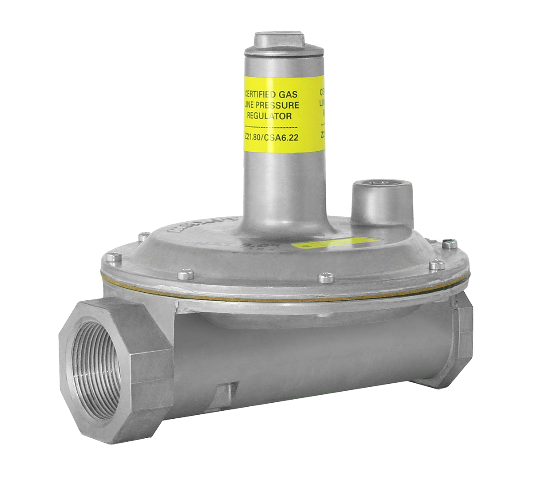Medium Pressure Gas Piping Systems

By: Reggie Hucks | Mar 31, 2021
When properly installed, fuel gas is a safe energy source for cooking, heating, clothes drying, and exterior lighting. It is available to serve residential and commercial buildings in the form of natural and liquified petroleum gas. Although these two fuel gases have different characteristics and work under slightly different manifold pressures, appliances can be converted to use either type. Adequately sizing the gas delivery piping is mandatory for safe operation. The piping cannot leak and must provide enough fuel for combustion to each appliance burner.
Traditional Gas Piping Systems
Traditional gas piping systems typically handled only one half (½) pound of gas pressure. This required the contractor to install relatively large steel pipe when high-gas–demand appliances were specified. Residential systems that included instantaneous water heaters, furnaces, and newer cooking ranges (with more than four burners) brought gas loads up to 300,000 BTUs and greater.
Medium Pressure Gas Piping Systems
The Maxitrol Regulator Company found a solution for the low pressure/high demand problem. They marketed a medium pressure regulator that would accept a gas inlet pressure of 2 psi and then reduce it to the standard ½ pound pressure delivery for appliances. This change decreased the overall size of gas piping but provided greater volume. These medium pressure systems have real advantages when used with piping materials that are easier to install. Here are a few examples where medium pressure systems can benefit a fuel piping contractor.
Design Flexibility
Medium pressure systems can give a contractor more design flexibility. Materials such as Corrugated Stainless-Steel Tubing (CSST) or copper tubing are more cost effective with medium pressure applications. Gas volumes can be delivered efficiently without the required threading and handling of long, heavy steel pipe. A contractor could, theoretically, purchase a single smaller size of CSST or copper tubing and design a gas piping system for an entire house. The cost of the medium pressure regulators must be factored in, but all pipe fittings, striker plates, cut-off valves, and connectors could be sized the same.
Reduced Equipment and Labor Cost
Newer piping materials do not require thread cutting machines, pipe racks, or several installers on a single residential installation. Once properly trained with CSST, a single installer can easily pipe an entire house. The same would be true with copper tubing.
Most regulators for medium pressure piping have vent–limiting systems. Without a regulator vent–limiter, large interior gas releases could occur if an overpressure condition happens. Standard vented regulators must be piped from their vent outlet to the exterior of buildings to prevent this. Because the additional vent piping is not required when vent limited regulators are employed, labor and equipment costs are reduced.
Reliable Gas Delivery
When a larger volume of gas is present near the appliance, pressure drop problems associated with long piping runs are eliminated. With marginally sized low-pressure systems, large appliances can shut down if the gas volume drops too low. When the delivery pressure is 2 psi near the appliance, the length of low-pressure piping is reduced, ensuring a better supply of fuel. Of course, where the regulators are placed can make a difference in price and performance. It would be the contractor’s option to weigh overall piping costs against the number of medium pressure regulators used. However, when designed and professionally installed as noted above, the medium pressure piping system can be a solid contributor to current residential and commercial fuel gas installations.

